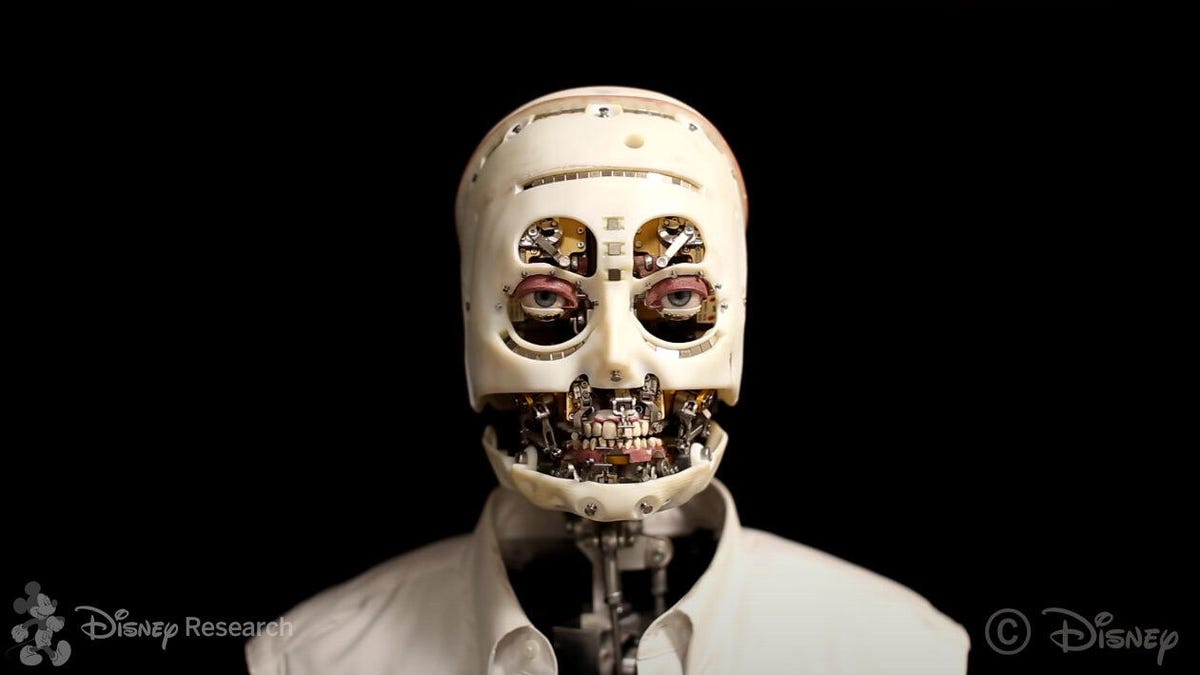Disney figured out how to make a robot gaze into your soul
Disney Research is creating "the illusion of life" by improving robotic eye movements.
Me: I don't know why people think robots are scary. Watches new Disney Research video. Also me: OK, now I get it.
Don't be put off by the skinless face of the humanoid animatronic bust that stars in a video demonstration of a "realistic and interactive robot gaze." What's cool here is how the robot's movements play off its human companion.
The footage, released last week, ties in with a Disney Research paper on "the development of a system for lifelike gaze in human-robot interactions" that aims to create "the illusion of life." Robots with this system will be capable of responding in a realistic manner to humans and to environmental cues.
I can't accuse this demonstration robot of entering the uncanny valley, mainly because it has no skin; it's not human enough. Maybe that qualifies it for a creepy valley instead.
Once you get past the look, focus on the robot's eyes and how they move. The narrator mentions "saccades," which is a rapid eye movement between multiple points. This is the sort of subtle detail we experience all the time when talking to other humans. It's both unsettling and profound to see it from a robot.
The research arm of Disney has brought us many marvels over the years, from a 3D-printed teddy bear to high-flying robotic stunt doubles.
Disney has long used animatronics to enhance the theme park experience. Check out this Avatar shaman for one impressive example. This innovation in the robotic gaze could make animatronic characters even more lifelike, continuing the slow blur between illusion and reality we've seen from humanoid robots in recent years.
Our future could end up looking like Westworld, but hopefully with a lot less carnage.


